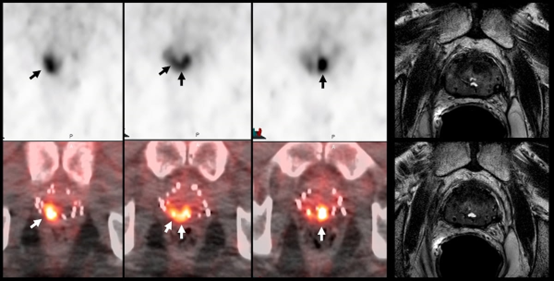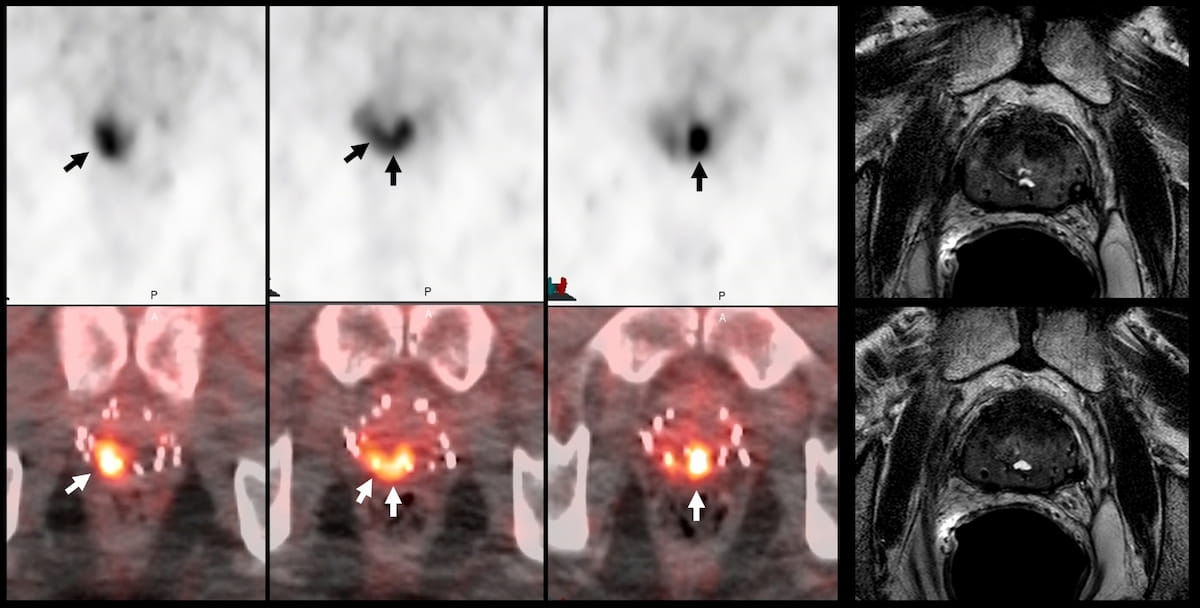For patients with intraprostatic/prostate bed findings of biochemical prostate cancer recurrence, the use of 18F-DCFPyL PET/CT with positron emission tomography/computed tomography (PET/CT) offers comparable detection to multiparametric magnetic resonance imaging (mpMRI), according to researchers from the National Cancer Institute, who presented their findings at the recent Society for Nuclear Medicine and Molecular Imaging (SNMMI) conference.
For the prospective study, researchers reviewed data from 213 patients (mean age of 67) with biochemical recurrence of prostate cancer. All patients in the study cohort had mpMRI and PET/CT with 18F-DCFPyL (Pylarify, Progenics Pharmaceuticals/Lantheus). The study authors noted that 115 patients had positive intraprostatic/prostate bed findings. These patients included 58 post-prostatectomy patients and 57 patients who were previously treated with radiation, according to the study.
For the 53 prostate cancer lesions diagnosed in post-prostatectomy patients, 22 lesions were detected with MRI alone, six lesions were diagnosed with PSMA PET/CT alone and 25 lesions were detected with a combination of the two modalities. For this cohort, researchers noted cancer detection rates of 83.7 percent for mpMRI, 92.1 percent for PSMA PET/CT and 94.2 percent for the combination of the two modalities.

In the above images, the use of 18F-DCFPyL PET/CT reveals several abnormal foci while multiparametric MRI was negative in a 70-year-old patient who had biochemical recurrence nine years after previous treatment for prostate cancer. (Images courtesy of the Society for Nuclear Medicine and Molecular Imaging (SNMMI)).
For the 66 prostate cancer lesions detected in post-radiation patients, 17 lesions were diagnosed with MRI alone, six lesions were detected by PSMA PET/CT alone and 43 lesions were diagnosed with a combination of the two modalities. The study authors noted cancer detection rates of 83.7 percent for mpMRI, 92.1 percent for PSMA PET/CT and 94.2 percent for the modality combination in this cohort.
“18F-DCFPyL-PET/CT and mpMRI show similar cancer detection rates of intraprostatic/prostate bed recurrences, and the combination of 18F-DCFPyL-PET/CT and mpMRI provides superior diagnostic performance than either modality alone,” wrote study co-author Baris Turkbey, M.D., a senior clinician and radiologist affiliated with the Molecular Imaging Branch of the National Cancer Institute and National Institutes of Health (NIH) in Bethesda, Md., and colleagues.
While mpMRI demonstrated a higher detection rate than PSMA PET/CT for prostate cancer lesions, the study authors noted a lack of pathology confirmation for all lesions and a higher number of false positives with mpMRI.
Reference
1. Mena E, Lindenberg L, Lin F, et al. Comparison between 18F-DCFPyL-PET/CT and multiparametric MRI in assessing recurrence within the prostate in patients with biochemical recurrence of prostate cancer. Poster abstract presented at the 2023 Society for Nuclear Medicine and Molecular Imaging (SNMMI) Annual Meeting June 24-27, 2023 in Chicago. Available at https://am.snmmi.org/iMIS/SNMMI-AM . Accessed August 16, 2023.
